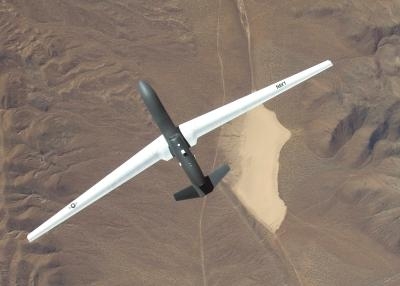Sun, Jan 26, 2014
Northrop Grumman-Built System Works As Eyes To U.S. Navy Fleet Commanders In The Middle East
The Northrop Grumman Corporation-built unmanned demonstrator aircraft used for maritime surveillance missions by the U.S. Navy surpassed 10,000 combat flying hours supporting intelligence-gathering missions in the Middle East. The Broad Area Maritime Surveillance Demonstration (BAMS-D) aircraft are currently flying 15 missions a month and allow fleet commanders to identify and track potential targets of interest using a specialized suite of surveillance sensors.

"BAMS-D has been extremely successful in providing a strategic picture to carrier and amphibious battle groups as they move through areas where we need more awareness," said Capt. James Hoke, Triton program manager with Naval Air Systems Command. "The BAMS-D aircraft started a six-month deployment in 2009 to demonstrate a maritime surveillance capability. Since then, they have continued to be used and have truly found their role in helping secure the safety of the fleet."
Based on the Global Hawk unmanned air system (UAS) designed for land surveillance, the BAMS-D systems were modified to work in a maritime environment. The aircraft regularly fly missions more than 24 hours long at high altitudes. The Navy is also using BAMS-D to understand how to best use the new surveillance capabilities for the MQ-4C Triton UAS. Currently under development, Triton uses an entirely new sensor suite optimized for a maritime environment.
"We've designed Triton to carry sensors that can monitor large ocean and coastal areas with a 360-degree field of view," said Mike Mackey, Triton program director with Northrop Grumman. "Coupled with anti-ice/de-ice capabilities and some structural strength improvements, the system will operate in a variety of weather conditions while providing a greatly improved surveillance picture to fleet commanders."
The Navy's program of record calls for 68 Triton UAS to be built.
(Image provided by Northrop Grumman)
More News
From 2023 (YouTube Version): Legacy of a Titan Robert (Bob) Anderson Hoover was a fighter pilot, test pilot, flight instructor, and air show superstar. More so, Bob Hoover was an i>[...]
Get The Latest in Aviation News NOW on Instagram Are you on Instagram yet? It's been around for a few years, quietly picking up traction mostly thanks to everybody's new obsession >[...]
Aero Linx: B-52H Stratofortress The B-52H Stratofortress is a long-range, heavy bomber that can perform a variety of missions. The bomber is capable of flying at high subsonic spee>[...]
Altimeter Setting The barometric pressure reading used to adjust a pressure altimeter for variations in existing atmospheric pressure or to the standard altimeter setting (29.92).>[...]
"Knowing that we play an active part in bettering people's lives is extremely rewarding. My team and I are very thankful for the opportunity to be here and to help in any way we ca>[...]
 Classic Aero-TV: Remembering Bob Hoover
Classic Aero-TV: Remembering Bob Hoover ANN FAQ: Follow Us On Instagram!
ANN FAQ: Follow Us On Instagram! ANN's Daily Aero-Linx (05.15.24)
ANN's Daily Aero-Linx (05.15.24) ANN's Daily Aero-Term (05.15.24):Altimeter Setting
ANN's Daily Aero-Term (05.15.24):Altimeter Setting Aero-News: Quote of the Day (05.16.24)
Aero-News: Quote of the Day (05.16.24)



